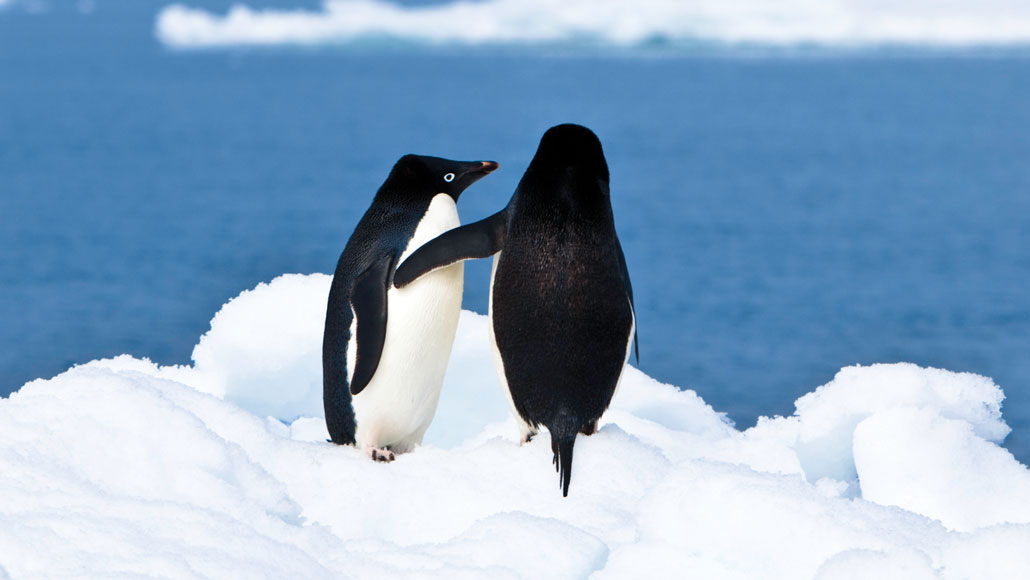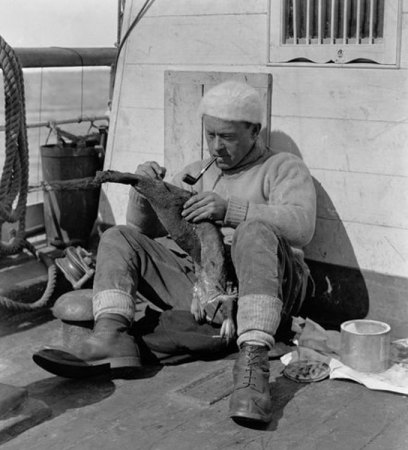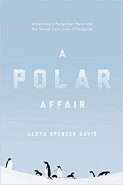‘A Polar Affair’ delves into a centurylong cover-up of penguin sex
A new book surveys penguin biology and Antarctic exploration history

The social and mating behaviors of Antarctica’s Adélie penguins have intrigued researchers for more than a century.
MOF/iStock/Getty Images Plus
- More than 2 years ago
A Polar Affair
Lloyd Spencer Davis
Pegasus Books, $29.95
On March 29, 1912, British explorer Robert Falcon Scott wrote the final diary entry of his ill-fated quest to reach the South Pole. That same day, more than 350 kilometers away, naval surgeon and zoologist George Murray Levick was hunkered down within a snowbank at Cape Adare, observing Adélie penguins.
Levick had accompanied Scott to Antarctica, but was not one of the five expedition members on the final trek to the pole. The return journey claimed the lives of all five. Levick survived the expedition, however, and in 1914, published a manuscript summarizing his observations — the first scientific descriptions of Antarctic penguins.
But he left something out.
During his months observing Adélie penguins, which included an entire breeding cycle, Levick witnessed the birds engaging in same-sex mating rituals. He also saw the birds engage in a variety of other sexual behaviors that in humans we might call promiscuity, infidelity, even prostitution. Levick recorded these scandalous details in a second manuscript, “The sexual habits of the Adélie penguin,” in 1915. But the manuscript was stamped “Not for Publication” and remained unpublished for nearly a century.
Sign up for our newsletter
We summarize the week's scientific breakthroughs every Thursday.
In 2012, the manuscript resurfaced in a scientific journal. Penguin biologist and author Lloyd Spencer Davis, who had thought he was the first to record same-sex behavior in Antarctic penguins in 1996, was dismayed and intrigued. So Davis embarked on a personal quest to understand how and why Levick’s observations had been buried in the first place — seemingly by his own wishes.
The result of that quest is Davis’ book A Polar Affair, an entertaining, chatty and sometimes salacious romp through polar exploration history, penguin biology and Victorian mores.
Each of the book’s five sections opens with a brief essay — Homosexuality, Divorce, Infidelity, Rape, Prostitution — that highlights how tempting it can be, whether in Victorian or modern times, to view penguin sexual behaviors through an anthropomorphic lens.
But the driving force of A Polar Affair isn’t really to understand these sexual behaviors, Davis writes. Instead, what he really wants to understand is “why Murray Levick would discover the dirty side of penguins and then try to cover it up.”

Davis delves into Levick’s personal history, hunting down his field notes and retracing his long, frostbitten months studying Cape Adare’s penguin colony.
Davis’ investigations are interspersed with a sweeping history of polar exploration that is by turns fascinating and frustrating. He also includes stories from his own penguin studies. The narrative meanders through the exploits of a wide-ranging cast of explorers who have since lent their names to bits of Antarctica’s geography, from James Clark Ross to Fabian Gottlieb von Bellingshausen.
Early expeditions led to key innovations to manage challenges such as the bitter cold and ever-present nutrient deprivation. And many of those innovations, we learn, came to bear in the 1911–1912 race to the South Pole between Robert Falcon Scott and Norwegian Roald Amundsen. (Amundsen got there first, beating Scott by about one month.) This rich and often intimate history can be riveting stuff. But much of it is also well-trodden ground, and at times, I found myself flipping ahead, wanting to get back to Levick and his penguins.
Other digressions, though, particularly Davis’ discussions of whether there are evolutionary benefits to penguins’ same-sex mating or nonmonogamous behaviors, are fascinating. Is same-sex mating a case of mistaken identity, in that male and female penguins are monomorphic, looking much alike? Is promiscuity among penguins related to the female’s inclination to build a stronger nest, one that is shored up by stones earned through offering sex?
These are questions with which Davis and other penguin biologists still wrestle. And A Polar Affair doesn’t come to a tidy answer for why Levick suppressed his most startling findings. But the book’s unique approach to polar exploration history makes for an engaging read. And by the end, Davis does come to terms with his need to understand his predecessor and with his own dismay at being scooped a century ago. The journey in discovery, he suggests, was satisfying. “It doesn’t really matter who was the first to see a bit of male-on-male action in penguins,” he writes, “any more than it probably matters who was first to stand on an arbitrary piece of ice and drive a flagpole into it.”
Buy A Polar Affair from Amazon.com. Science News is a participant in the Amazon Services LLC Associates Program. Please see our FAQ for more details.








